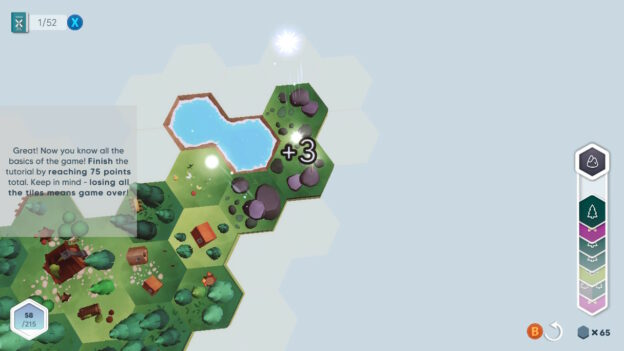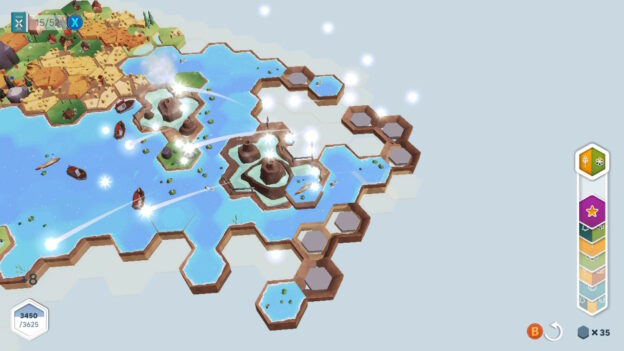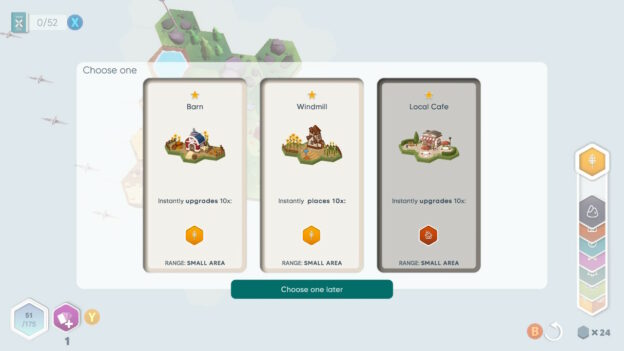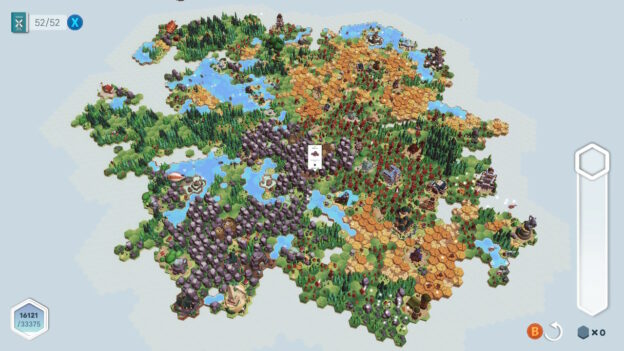Review: Pan’orama (Nintendo Switch)

Pan’orama is a puzzle strategy game developed by Chicken Launcher and published by Awaken Realms. Essentially, this title is a digital one-player board game where you build your own ecosystem complete with water sources, towns, mountains, and more. The best part? There’s little thinking involved.
I know what you’re thinking; you’re supposed to think when solving puzzles. However, Pan’orama is more about strategizing your tile placement and the game does the math for you. No math or keeping track of my own points? I’m sold.
This title has four modes, one of them being the tutorial. Normally, for these types of games, I skip the tutorial and then often get stuck. So, I opted to play through the tutorial and, to my surprise, it took five minutes. The gameplay is simple and the controls are minimal making them easy to remember. You have the ability to zoom in and out of the map, move and rotate the camera, and the rest is simply placing down a tile. That’s it.
I launched myself into playing the main mode next, which is Standard. You begin with a single tile on the map and have a hand of 40 other tiles shuffled randomly. You can’t skip one or pick and choose. You have to use the tiles in order. Each one has its own element. They don’t have names, just pictures. So, I call the elements, rock, tree, water, house, wheat (which is a barren land), and flower (which is a wild card). Rocks build mountains, trees create forests, and so on.
The idea is to place the same elements adjacent to one another. By doing so, the surrounding similar tiles will grow, giving you more points. If you place a rock next to a tree, you’ll only earn one point. As your map grows, you need to find the best spot for each tile to maximize the points you earn. The nice thing about Pan’orama is all I needed to do was listen to the zen music and move the tiles around until I found the spot that gave the most points before placing it. There is an undo button and you can use it as many times as you need. If you want to reset the whole map, you can do that. It’s chill gameplay at its finest.
The points have a purpose other than getting a high score, though. The point of the game is to build all the monuments and there are 52 of them. Once you reach a certain amount of points, the game will give you the choice of one out of three monuments. To build them, it’ll ask you to place certain tiles down in specific spots. Upon completion, you earn more points and more tiles get added to your hand. This process continues until you either lose by running out of tiles or win by building all 52 monuments.
The first time I played Standard mode, I lost getting only 1700 points and a handful of monuments built. I then tried Creative mode, which is a sandbox. Normally, that’s my favorite mode for these types of games but without the points, there’s no real purpose to having everything unlocked at once. So, I didn’t play long.
I moved onto Challenge mode next, which is the same as Standard. However, you need to play the mode to unlock certain challenges. It was a little confusing at first. It would make more sense to unlock challenges by reaching thresholds in Standard. There are also two types of challenges: perks and masters. Perks seem to be ways to earn more points, such as upgrading the flower tiles. However, I never unlocked any of the master challenges, so I don’t know what that’s about.
So, I went back to Standard and beat the game in about five hours. Yes, that was in one sitting. You can save and it auto-saves, but Pan’orama is addicting. I woke up on a snowy weekend morning and played this game for eight hours straight.
My only complaint? The loading screens are a tad long. Otherwise, the graphics are charming, controls are smooth, and the music and gameplay is zen. I can certainly see myself going back to this title since no two playthroughs will ever be alike. I got over 16000 points in the game I won. Maybe I can beat that next time.
The post Review: Pan’orama (Nintendo Switch) appeared first on Pure Nintendo.







